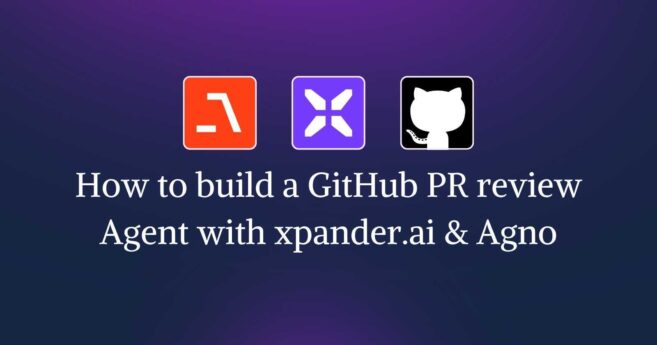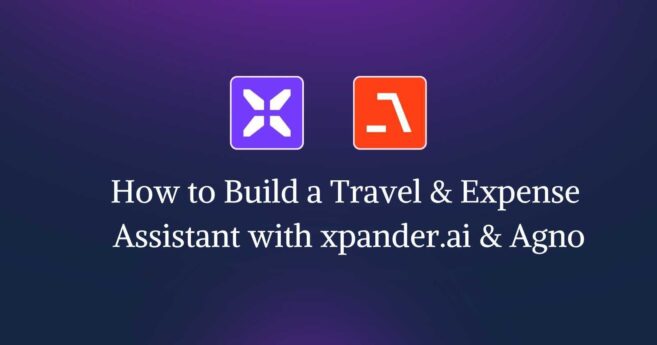At xpander.ai, we’ve always believed that AI Agents should not live behind APIs or be buried inside product dashboards. They should work the way humans work – talking, responding, helping, and solving problems in the places we already collaborate. If you think that just means another Slackbot, think again. This isn’t about alerts, slash commands, or workflow shortcuts. We’re talking about fully capable AI teammates – ones that understand your tools, your context, and your business. That’s why we’re excited to announce Slack-native AI Agents: a seamless way to turn any custom AI Agent into a full-fledged Slack teammate.
With this new feature, you can deploy your AI Agent to Slack in minutes. It’ll behave like a real coworker – responding to mentions, maintaining memory across threads, handling tasks in direct messages, or even jumping into conversations and engaging automatically. From internal activities and tasks to customer-facing support, these agents unlock new ways for teams to work faster and smarter – right from where they already live: Slack.
Let’s walk through why we built this, and why we think it’s the clearest path to adoption for AI Agents across the enterprise.

Slack is everywhere – and it’s how modern teams work
Slack is no longer just a chat app. It’s the place where hundreds of thousands of companies – from tiny startups to Fortune 100 giants – collaborate, make decisions, and get work done.
Over 750,000 organizations use Slack, including 77 of the Fortune 100. The platform has grown to an estimated ~42 million daily active users, with strong adoption across both small and large companies. Small businesses are some of the most avid users, with 40% of Slack’s customer base made up of teams with 20–49 employees. But even massive enterprises like AWS and IBM use Slack across their entire workforce.
Slack has become the digital HQ. And more importantly, it’s the one place where work already flows: files, alerts, discussions, approvals, decisions, context, people. All in one thread.
Humans are already talking to machines in Slack
If you’ve used Slack in a modern company, chances are you’ve interacted with a bot. Slackbots are everywhere – from DevOps alerting to workflow automation, to daily reminders and issue notifications. Teams rely on bots from Datadog, AWS, GitHub, PagerDuty, and many others to keep them informed and on top of operations.
But these bots are limited. They respond to tightly scoped commands. They don’t remember context. They don’t know who you are. They can’t adapt. They certainly don’t collaborate like a human.
What they have done is build comfort. Teams are already used to talking to Slackbots. They expect to issue commands, receive updates, and occasionally interact with an automated helper.
Now imagine that instead of a rigid script-based bot, you had a smart teammate – an AI Agent that could understand your requests, ask clarifying questions, connect to internal systems, and act independently. One that learns, adapts, and supports the work in context – not just log files and alerts.
That’s the next evolution. That’s what we’re bringing to Slack.
What should the ideal human-machine interface look like?
As organizations increasingly adopt AI Agents to automate work and augment their teams, the question of how humans interact with those agents becomes critical.
Slack already acts as the hub where humans collaborate and where bots quietly assist in the background. It’s the digital space where humans:
- Coordinate across teams
- Ask questions
- Tag colleagues
- Review status updates
- Make approvals
And in many of those interactions, they’re already interacting with machines – just ones that are primitive and rule-based.
We believe Slack is one of the best candidates for a unified human-machine interface – a place where AI Agents can exist alongside humans, in the same workflows and conversations, without context switching.
So we built it: Slack-native AI Agents from xpander
After working closely with customers and studying usage patterns, we realized that Slack was the ideal delivery mechanism for many types of AI Agents – and not just because it’s widely adopted.
Slack is where humans already communicate with each other and with machines. And with the power of AI Agents built on xpander – complete with memory, instructions, secure auth, and real-time tool execution – we’re fusing those two together.
We’re launching Slack-native AI Agents that act like full team members:
- Join channels
- Maintain conversation threads
- Know who they’re talking to
- Understand company context
- Execute tools and workflows
- Retain long-running memory across DMs and threads
They’re not bots. They’re colleagues.
How they work in Slack
Once connected, your AI Agent behaves like a proactive teammate:
- Auto-engages in channels when certain topics come up (e.g. “refund,” “deployment issue,” “priority escalation”)
- Maintains context over time for long-running support threads or project updates
- Works in DMs to handle deep problem-solving or one-on-one requests
- Executes tools and APIs you’ve configured – calling your internal services, external SaaS platforms, or anything else wired into the custom AI Agent working in xpander – including end-to-end authorization with Oauth2
- Understands human input in messy, non-linear, real-world Slack conversations
It feels less like talking to a bot, and more like working with a competent, helpful, and available teammate.
Where customers are already using this
This Slack-native integration has been in private testing with customers across different industries – and it’s already live across a wide range of use-cases:
- Internal operations: Agents helping with data lookups, system queries, HR answers, onboarding, and daily engineering tasks
- Customer-facing support and success: Agents operating in shared Slack channels to surface relevant answers, track tickets, or summarize account status
- Community workspaces and long-tail users: Helping answer product questions, triage issues, and provide support in public channels – where scaling humans isn’t practical
- Sales and GTM: Assisting in qualification, research, and outbound prep – all in real-time alongside sales reps
And across all these, the key pattern is the same: humans interact with agents as if they were part of the team. Because they are
We handle the messy layers so you don’t have to
Building Slackbots and automation is deceptively painful. You start with Slack SDK boilerplate, add OAuth flows, event listeners, and thread handlers – and before long, you’re maintaining infrastructure just to parse button clicks and route messages. But that’s only the beginning.
Once you’ve got a Slack bot responding, you still need to hook it up to your AI Agent. That means managing agent sessions, wiring in APIs and tools, interpreting user inputs, and adapting to the constant evolution of agent triggers whether that’s MCP, A2A, or external API workflows.
We’ve built the infrastructure so you don’t have to. xpander handles both of the hard and undifferentiated layers that typically slow teams down:
- The Slack integration and event orchestration
- The agent interface and operational scaffolding
So you can focus on building agents with real impact – instead of wrestling with low-level glue code and webhook spaghetti.
Try Slack-native AI Agents today
Slack-native AI Agents are available now for all xpander users. If you’ve already built an agent, you can connect it to Slack in minutes. If not, it’s the perfect place to start – because your teammates are already there.
➡️ Explore the docs and get started
We’re excited to help teams get more done, with AI Agents that feel native, helpful, and human – right inside the tool you use every day.







